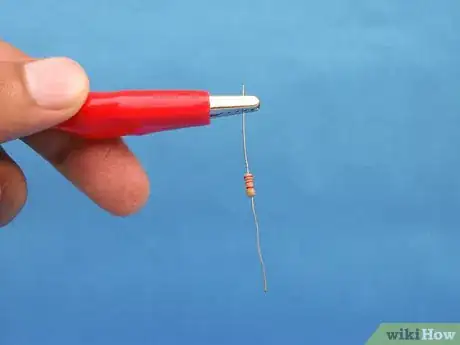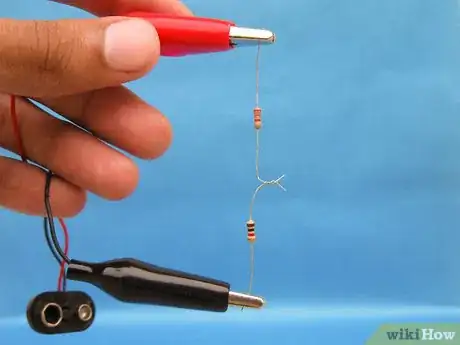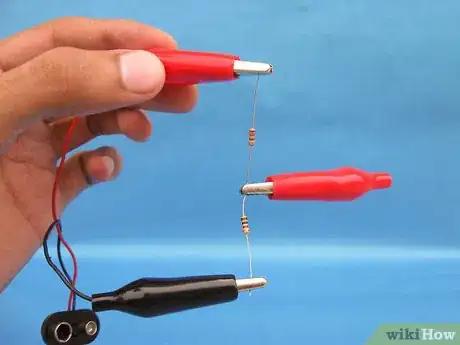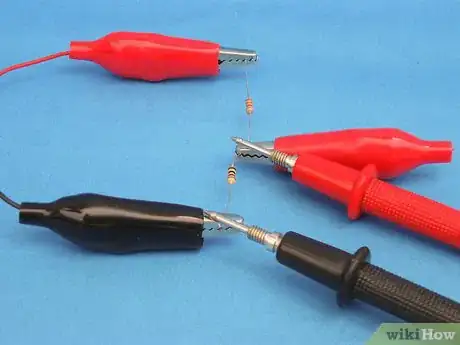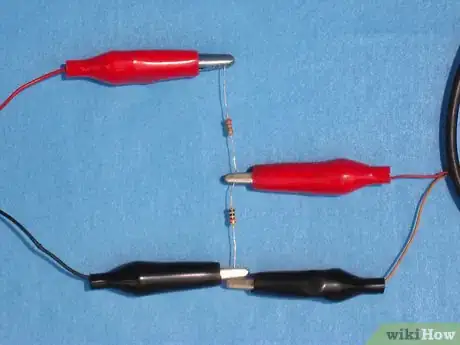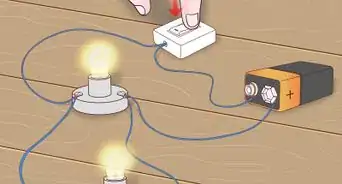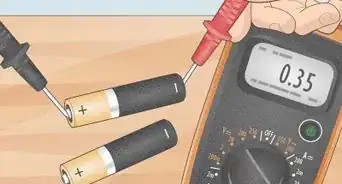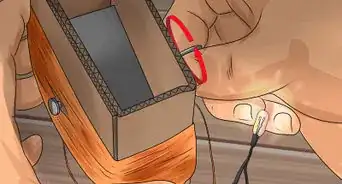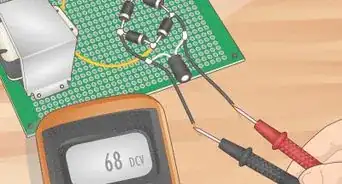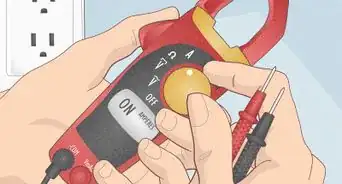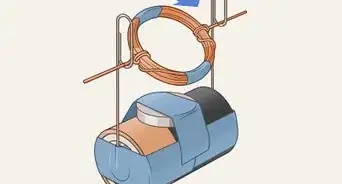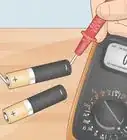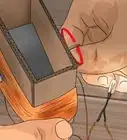X
wikiHow is a “wiki,” similar to Wikipedia, which means that many of our articles are co-written by multiple authors. To create this article, 17 people, some anonymous, worked to edit and improve it over time.
This article has been viewed 106,530 times.
Learn more...
When making a portable circuit, such as a remote control, you may need to use a smaller voltage source than you can usually find off the shelf. Many simple electronic components can only withstand 5V, even though one of the most common voltage sources for this type of circuit is a standard 9V battery. This article will show you a simple way to turn a 9V battery into a 3V source for your portable circuit if it does not draw much current.
Steps
-
1Connect one lead of the 20-ohm resistor to the exposed part of the red lead of the 9V battery snap-on connector using an alligator clamp.
-
2Repeat Step 1 to connect the black lead of the snap-on connector to one lead of the 10-ohm resistor.Advertisement
-
3Twist together the free end of each resistor. This will be the easiest way to make sure that there is a solid connection between the resistors.
-
4Clamp the last alligator clamp over the twisted leads of the resistors to ensure they stay in place.
-
5Connect the snap-on connector to the 9V battery so that the red wire is connected to the positive (+) terminal and the black wire is connected to the negative (-) terminal.
-
6Hold the negative (black) lead of the voltmeter against the alligator clamp touching the negative (black) lead of the snap-on connector.
-
7Hold the positive (red) lead of the voltmeter against the alligator clamp holding the twisted resistor leads in place.
-
8Turn on the voltmeter. The screen should read 3V.
-
9Use the connection where the twisted resistor leads are located as the positive voltage terminal for your circuit. The negative terminal of the battery will still be your negative source for the circuit. You now have a voltage divider for your 9V battery.
Advertisement
Warnings
- Be sure to unhook one end of the voltage divider (or unplug the battery) when not in use to prevent your battery from draining.⧼thumbs_response⧽
- The values chosen here waste a lot of power. The resistors generate a total of V2/R = 92/30 = 2.7 watts, so they could get very hot. Your battery voltage may sag well below 9 volts due to the heavy load even without any device connected to your voltage divider.⧼thumbs_response⧽
- You should always use caution when working with electrical devices that plug into a wall outlet to reduce the risk of electrocution. However, there is not much danger of electrocution from a 9V battery.⧼thumbs_response⧽
Advertisement
Things You'll Need
- Standard 9V battery
- 1-9V battery snap-on connector
- 1-10ohm resistor, 2 watts or higher dissipation capability
- 1-20ohm resistor, 3 watts or higher dissipation capability
- 3 alligator clamps
- 1 digital voltmeter
About This Article
Advertisement
